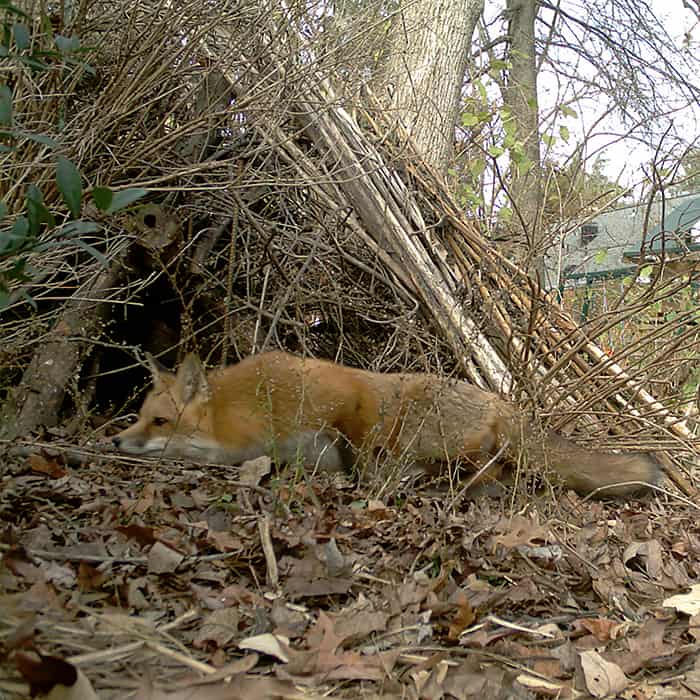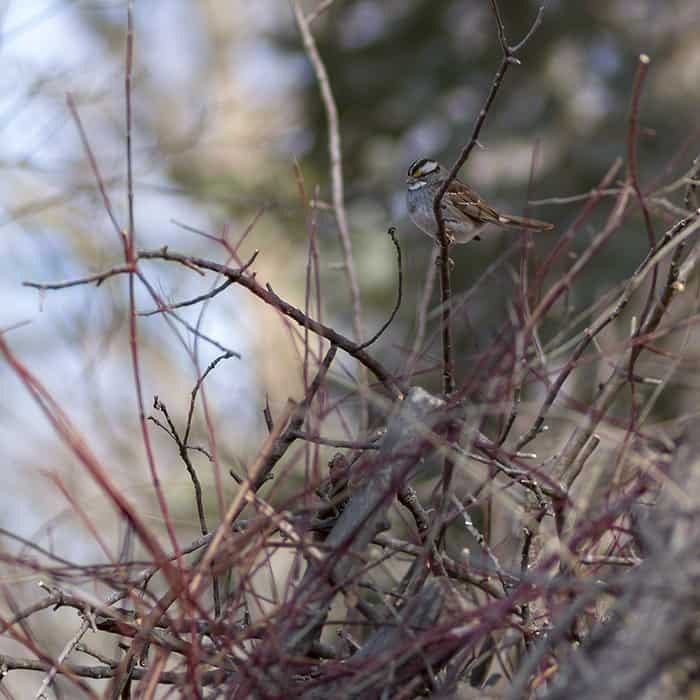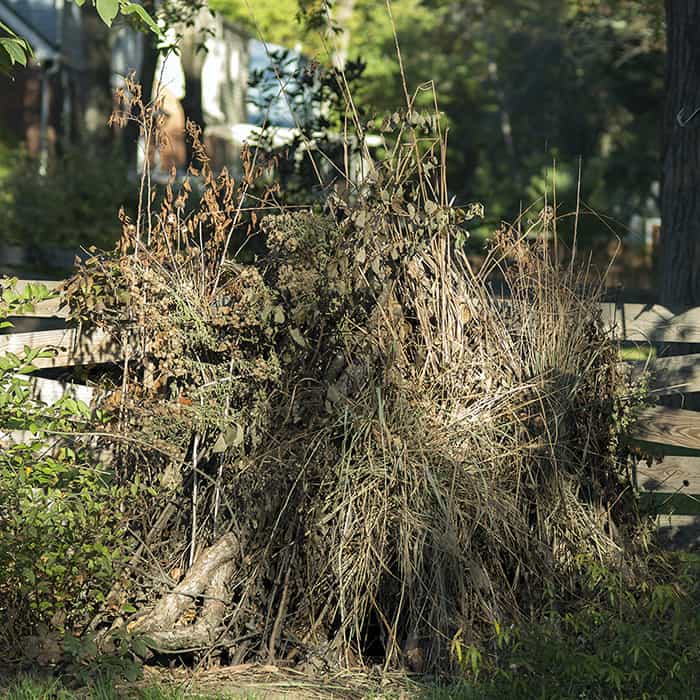THE BRUSH PILE: BUILD IT FOR OUR WILD FRIENDS

The components of our two small brush piles consist of fallen tree branches gathered on our property and found curbside around the neighborhood and include larger chain-sawed limbs. We don’t have a large lot – it’s less than a ¼ of an acre – but reducing lawn has left us with more room to accommodate critters. Building both habitats was quick and easy, and wearing architect as well as artist hats made the handiwork enjoyable. Constructing a brush pile to support our wild friends is definitely a fun and creative project for families to do together – and to enjoy for many years.
The Three S’s: Sanctuary, Shelter and Snacks
Why should you create a brush pile? There are three elements a brush pile provides:
1. Sanctuary. Brush piles create a sanctuary for our wildlife. Birds, salamanders, snakes, turtles, small mammals (and more!) all need a helping hand, especially in our stripped-down suburban areas. A properly built brush pile provides a place for our creatures to hide from their many predators.
2. Shelter. In times of extreme weather a brush pile is the perfect shelter. In winter it’s particularly vital for protecting our birds. If your property is void of mature evergreen shrubs and trees that birds need for protective cover, evergreen foliage placed over a brush pile during the winter months will create a dry interior birds can safely roost in.
3. Snacks. Many insect species are attracted to the decaying wood and will make it their home. Insects found in brush piles are an additional source of protein-rich food for woodpeckers and other bug eating animals.
Brush Pile Basics
Our two brush piles were placed in the backyard where they are not too highly conspicuous. They’re at the edge and back of our property near native shrubs, with one purposely positioned to be close to the bird feeder. Birds that frequent feeders or are exposed in open areas are easy prey for hawks, fox and domestic pets – so having the brush pile a quick hop-and-a-swoop away was a priority.
Size: Build what is practical in your available space. Brush piles can range from 3 to 8 feet tall and from 6 to 20 feet wide. A large construct will be used more.
Exposure: A sunny or partially sunny spot, if possible.
Location: In your backyard, near a wood line, at the far edge or back corner of your property and away from buildings (think about combustibility as well as rodents living next to your home’s foundation). The site should also have good drainage. If you belong to a Homeowner’s Association, their guidelines should be considered. And if your neighbors are neatniks, you can let them in on your plans.

Building Instructions
Begin with the foundation of larger logs or stones. The Alabama Cooperative Extension System recommends: “When constructing the foundation, use the largest materials. Provide entrance spaces 6 to 12 inches wide for easy access. To make a good foundation, place four logs (6 to 10 inches in diameter) parallel to each other about 1 foot apart. Place four more logs on top, perpendicular to the ones on the ground. You could substitute large, flat rocks for the second layer of logs if you want.
You could also make three or four rock piles about 6 to 12 inches apart. Each rock pile should be about 10 inches high and 12 inches across. Arrange the piles so that they make a triangle if three piles are used or a plus sign if four are used.
Other things can also be used to build foundations. For example, you can lean two or three logs (6 to 10 inches in diameter) against a stump. Use your imagination and the materials you have on hand. The main thing to keep in mind is that the foundation should keep small “tunnels” open under the pile of brush.”

Once the foundation is in place, branches, limbs and twigs can be stacked on the foundation to form the pile. Even discarded Christmas trees can be put to good use. If I cut back perennials that are flopping over onto the walkways, I’ll add them to the pile. Native grasses and other stems with ripened seed heads are simply tucked into the crevasses, adding wildlife food and a bit of character to the structure.
For Large Lots: The Living Shelter
An option for larger properties is the living shelter. The Alabama Cooperative Extension System explains: “If constructed of living materials, your brush shelter will last much longer. Living shelters provide not just cover, but food as well.
To make a living brush pile, find several (three to five) small hardwood saplings (2 to 8 inches in diameter) located close together. Cut each tree halfway through the trunk about 12 inches above the ground. Place the cuts on the outside of the tree, away from the other trees in the group. Since the tree is not cut all the way through, there will be enough living material under the bark {cambium layer} to keep the tree alive. Push the tree over towards the other trees in the group so it rests on the ground or on top of the other half-cut trees.
Living brush piles made from hardwoods supply buds, twigs, leaves, and seeds for animals to eat as well as cover and protection.”
The Extension goes on to recommend fertilizing the saplings. Instead of synthetic fertilizers that can harm the delicate balance of the soil, the better choice is to keep the sapling’s roots covered in 2 – 4 inches of natural leaf compost, leaf mulch or wood chips.
Other Thoughts
If aesthetics are a concern in a small habitat garden, planting a not-so-aggressive flowering native vine to grow over your brush limbs will add color and nectar for pollinators. In Virginia, options include yellow passionflower (Passiflora lutea), a part shade vine that tolerates wet to dry conditions and trumpet honeysuckle (Lonicera sempervirens), a hummingbird attractor that blooms well in full to part sun in moist to dry soil. Lonicera’s trailing vines can be trimmed back if needed. Check with your regional Native Plant Society for options for your area.
The materials you select for constructing a brush pile are not limited to tree trunks, branches and natural rock. But thoughtful choices should be made. Materials that contain toxic substances such as CCA (arsenic) pressure-treated lumber, lead painted surfaces, tires or other petroleum-based products should not be used. These products can harm wildlife. They can also leach into ground water and ultimately affect your drinking water. Choose the best components to keep your brush pile natural.
To find out more about brush piles, check out:
